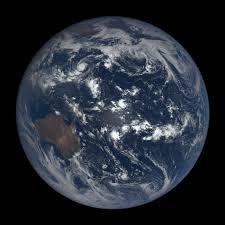
Introduction
Earth’s rotation, the spinning of our planet around its axis, plays a vital role in defining our day-night cycle and influencing various natural phenomena. As such, understanding this fundamental aspect of our planet’s behavior is essential for both scientific inquiry and everyday life. The rotation of Earth not only impacts timekeeping and navigation, but it also shapes weather patterns, ocean currents, and even the biological rhythms of living organisms.
Details of Earth’s Rotation
Earth rotates on its axis approximately once every 24 hours, completing a full rotation in an eastward direction. This axial tilt of about 23.5 degrees is responsible for the seasonal changes we experience throughout the year. The rotation speed varies depending on location, reaching about 1,670 kilometers per hour (1,040 miles per hour) at the equator, and gradually decreasing to zero at the poles.
Recent studies have indicated that Earth’s rotation may be gradually slowing down due to tidal friction caused by gravitational interactions with the moon. This deceleration occasionally leads to minor variations in the length of days. In fact, researchers from the International Earth Rotation and Reference Systems Service (IERS) closely monitor these changes to adjust clocks and maintain precision in timekeeping globally.
Impact on Life and Climate
The implications of Earth’s rotation extend beyond just measuring time. It has a profound effect on climate systems and weather patterns. The Coriolis effect, which is a direct result of Earth’s rotation, influences wind patterns and ocean currents, dictating weather systems across the globe. This effect is crucial for understanding phenomena like hurricanes, which depend heavily on the rotation of the Earth for their formation and trajectory.
Moreover, many living organisms, including humans, have biological rhythms tied to the cycle of rotation. These circadian rhythms regulate vital functions such as sleep patterns, hormone release, and eating habits. Disruptions to these natural rhythms—often caused by artificial light or shift work—can lead to various health issues.
Conclusion
In conclusion, Earth’s rotation is far more than just a simple astronomical phenomenon; it is a key driver of several essential aspects of life on our planet. As we continue to study and understand its effects, it becomes increasingly clear that any significant alterations in this natural process, whether due to human impact or cosmic events, could have consequential implications for climate and life itself. Ongoing research in this field remains vital as we strive to comprehend our planet and sustain its delicate balance.

